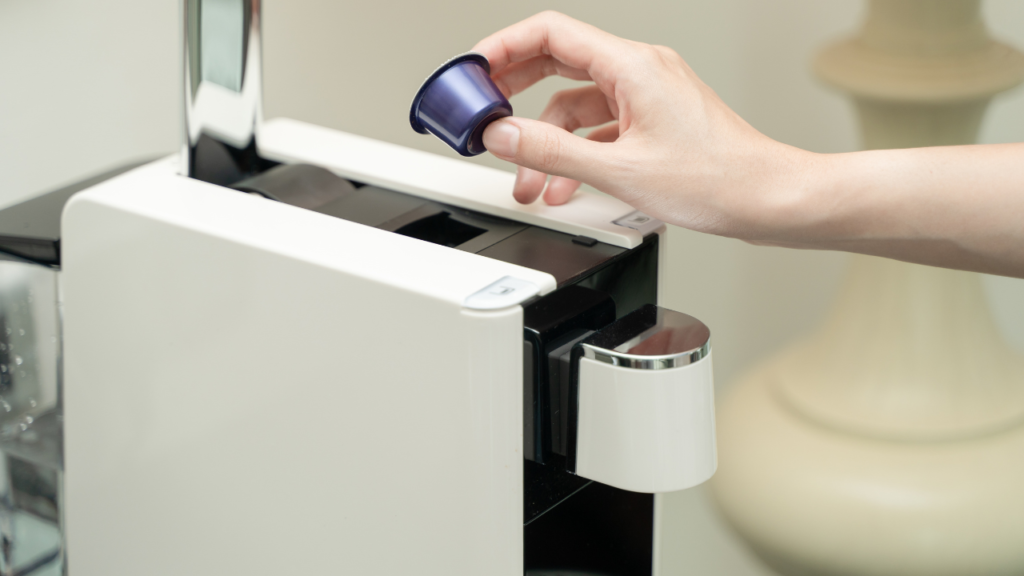
If you’re a coffee fanatic, your trusty coffee machine is your best friend.
It’s crucial to keep it clean and in good shape because it’s responsible for making your morning coffee.
In this article, we’ll go over “how to clean your coffee maker with vinegar,” why it’s a good idea to use vinegar to clean your machine, and other cleaning alternatives.
Table of Contents
Why cleaning your coffee maker is important
Over time, your coffee machine will collect oils, mineral deposits, and germs, all of which can diminish the flavor and quality of your brew.
In addition, health problems like indigestion or food poisoning might develop from using a coffee maker that hasn’t been properly cleaned.
Coffee made in a clean coffee maker not only tastes better but also lasts longer.
Benefits of using vinegar to clean your coffee maker

Vinegar is a safe and effective way to clean your coffee machine, as it dissolves mineral deposits, oil buildup, and bacteria.
It is a cheap and easily accessible cleaning product that does not leave any hazardous chemicals or residues behind after use.
Moreover, vinegar is a more eco-friendly alternative to other commercial cleaning chemicals.
Materials Needed Clean Your Coffee Maker with Vinegar
To clean your coffee maker with vinegar, you’ll need the following materials:
- White vinegar
- Water
- Paper filter or a clean cloth
Steps to Clean Your Coffee Maker with Vinegar
Step 1: Fill the water tank of your coffee maker with Water and Vinegar
Cleaning your coffee maker with vinegar begins with filling the water tank with a solution of equal parts white vinegar and water. The capacity of your coffee maker will determine how much solution you need to use. To achieve the right proportions, use a measuring cup or a 1:1 ratio.
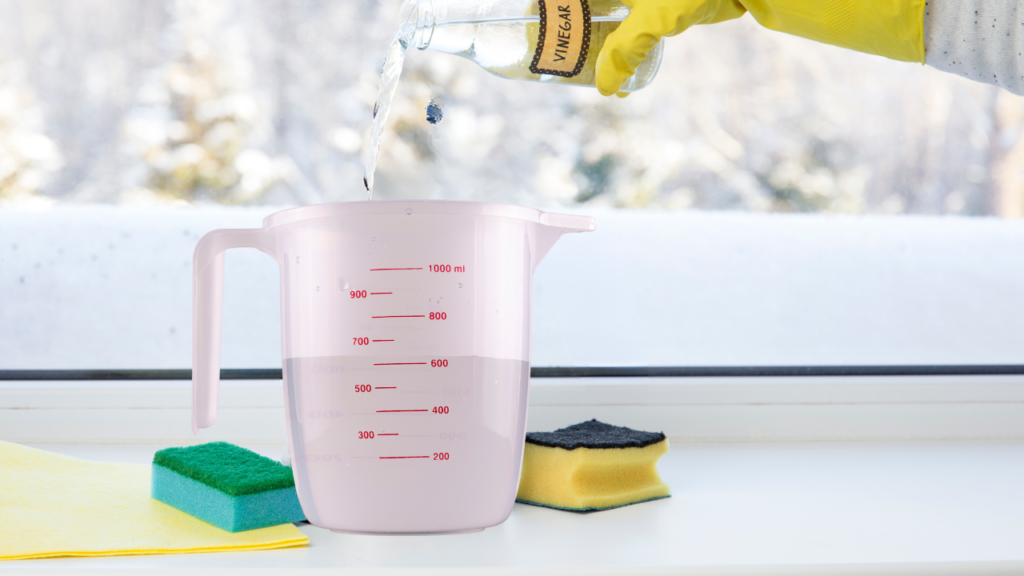
Step 2: Place a paper filter or a clean cloth in the coffee maker’s filter basket.
Put a paper filter or a clean cloth in the filter basket of your coffee maker to stop mineral deposits, oils, and bacteria from accumulating there. That way, the coffee maker’s inner workings won’t get clogged up with cleaning residue.
Step 3: Turn on the coffee maker
Turn on the coffee maker after filling the water tank and adding the filter or cloth, and let it run until half of the vinegar solution has brewed. Doing so will allow the vinegar to flush the coffee maker’s internals and eliminate any lingering residue or dirt.
Step 4: Turn off the coffee maker
When the vinegar solution has brewed for half the time given, turn off the coffee maker and let it sit for 30 minutes. This will allow the vinegar to thoroughly clean the coffee maker and remove any lingering residue or debris.
Step 5: Turn on the coffee maker again
Turn on the coffee machine after waiting 30 minutes to brew the remaining vinegar solution. As a result, you may rest assured that the coffee machine has been completely emptied, cleaned, and descaled.
Step 6: Run plain water through the coffee maker two or three times
If your coffee maker still smells or tastes like vinegar after using normal water, try running it through again with vinegar. It will get rid of any leftover vinegar solution and bring back the coffee’s original taste. Once you’re done, your coffee machine should be clean and ready to use!
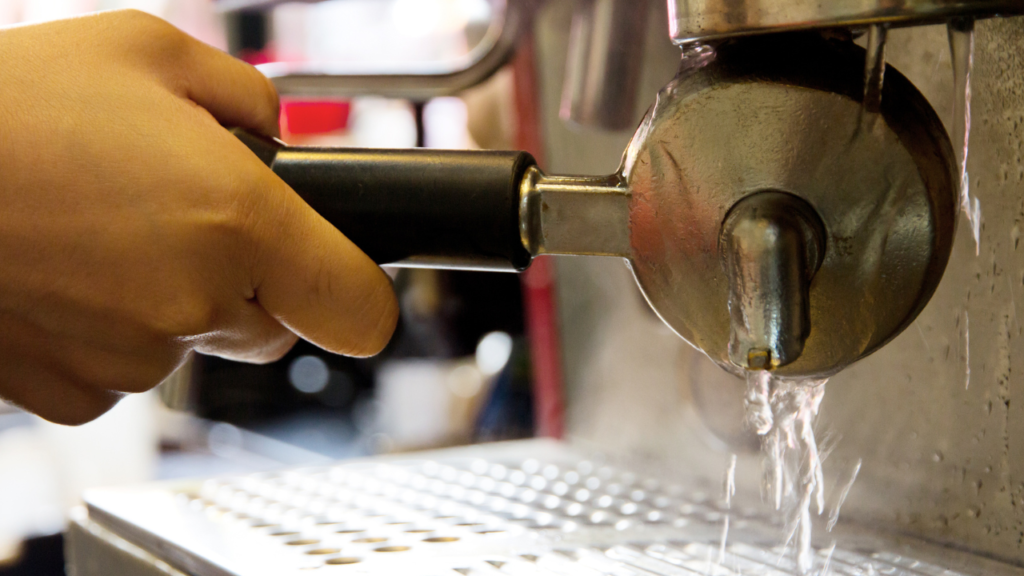
Tips for the best results- How to clean your coffee maker with vinegar
- Check the manufacturer’s instructions before cleaning your coffee maker as some models may require different cleaning procedures.
- Clean the coffee maker once a month to maintain its quality and lifespan.
- Discard the used paper filter or cloth after cleaning.
How to perform a deep clean on your coffee maker with vinegar
If your coffee maker hasn’t been cleaned in a while, a deep clean may be necessary.
Here’s how to perform a deep clean on your coffee maker with vinegar:
Step 1: Mix a 1:2 ratio of white vinegar and water in the water tank of your coffee maker.
Step 2: Turn on the coffee maker and let the solution brew until it’s halfway done.
Step 3: Turn off the coffee maker and let the solution sit for an hour.
Step 4: Turn on the coffee maker again and let it brew the remaining solution.
Step 5: Run plain water through the coffee maker several times to remove any remaining vinegar taste.
When and how often to perform a deep clean
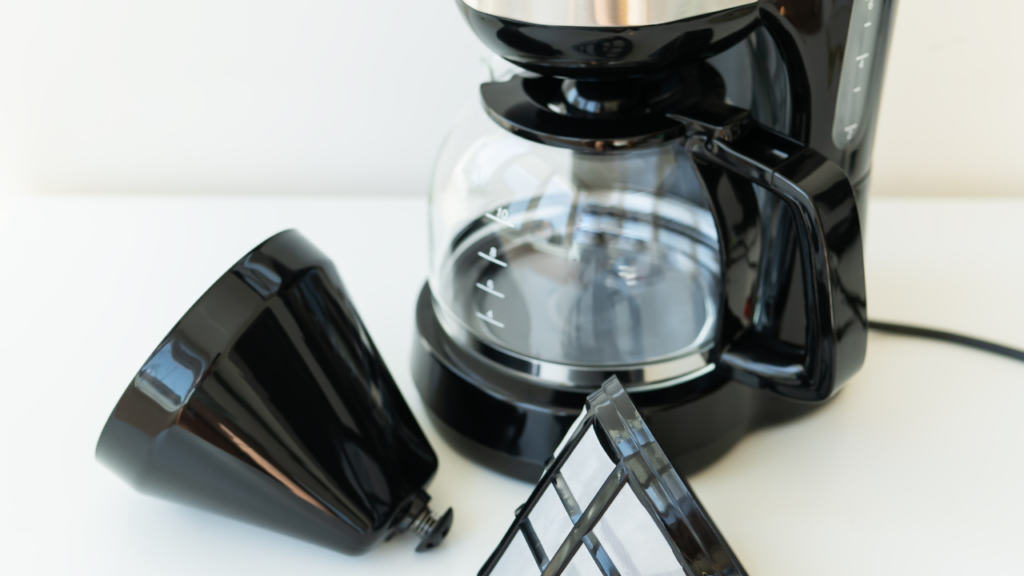
Maintaining your coffee machine requires a good cleaning. Deep cleaning depends on usage and water hardness.
To remove mineral buildup and debris that might influence the coffee quality and machine efficiency, a deep clean is recommended every 3-6 months.
For a deep clean, use a stronger vinegar solution. Coffee machine mineral deposits can be removed with a 2:1 vinegar-water solution.
Before serious cleaning, check your coffee maker’s handbook for detailed instructions.
Other Methods for Cleaning Your Coffee Maker
Vinegar is an inexpensive and efficient cleaning agent, but it’s not the only option for your coffee maker. Some options to think about are as follows:
- Lemon Juice: In order to clean your coffee maker without using harsh chemicals, try using lemon juice. Simply combine equal volumes of lemon juice and water, pour the mixture into the water tank of your coffee maker, and proceed to brew the mixture as you normally would with coffee. Lemon juice may not be as successful as vinegar in killing bacteria, which may be concerning for individuals who want to make sure their coffee machine is completely germ-free.
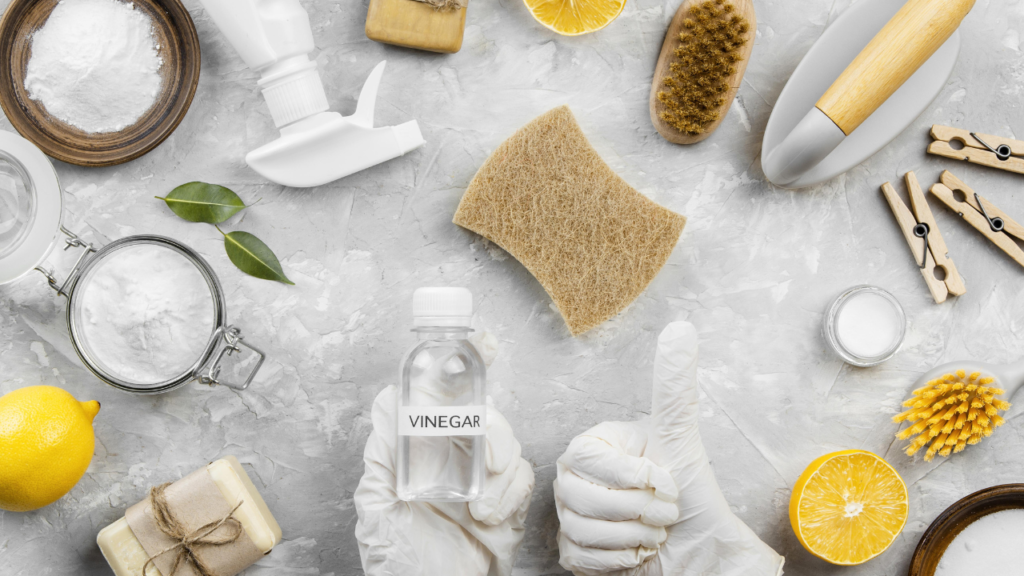
- Commercial Cleaning Products: Cleaning products available for purchase are plenty, and many of them are made with coffee machine cleaning in mind. You can use these products with confidence that they will remove any residue from your coffee maker and keep it in tip-top shape. On the downside, these products can be more costly than vinegar and may even be dangerous due to the harsh chemicals they use.
Pros and cons of each method
| Method | Pros | Cons |
| Vinegar | Inexpensive and readily available | Can leave a strong vinegar scent in your coffee maker |
| Effectively removes mineral buildup, oils, and bacteria | Can be harsh on some types of coffee makers and parts | |
| Environmentally friendly and non-toxic | May require additional rinsing to remove all traces of vinegar | |
| Lemon Juice | Natural and affordable option | May not be as effective as vinegar in killing bacteria |
| Effectively removes mineral deposits and oils | May leave a lemon scent in your coffee maker | |
| Environmentally-friendly and non-toxic | Can be time-consuming if you have to juice fresh lemons | |
| Commercial Cleaning Products | Easy to use and convenient | More expensive than using vinegar or lemon juice |
| Effectively removes buildup and ensures your coffee maker is clean and well-maintained | May contain harsh chemicals | |
| Some products come with descaling and sanitizing properties | Some products may leave a residue that affects the taste of your coffee | |
| Can be more effective than natural alternatives in removing stubborn stains and buildup | May not be environmentally- friendly |
Tips for keeping your coffee maker clean and in good condition
- Wipe the exterior of the coffee maker regularly with a damp cloth.
Coffee machines can get dirty, especially if used often. Wipe your coffee maker’s exterior with a moist cloth to keep it clean. This will remove dust and grime from the coffee maker.
- Remove and clean the coffee maker’s carafe and filter basket after each use.
After each use, remove the carafe and filter basket from the coffee machine and clean them. The carafe and filter basket should be washed in warm, soapy water and rinsed completely. This will ensure that your coffee maker always makes fresh, tasty coffee.
- Use filtered or bottled water to reduce mineral buildup in the coffee maker.

Over time, using tap water in your coffee machine can cause mineral buildup, which affects taste and quality. To avoid this, use filtered or bottled water to brew coffee. This will keep your coffee fresh and avoid mineral accumulation in the coffee machine.
- Replace the coffee maker’s water filter regularly if it has one.
If your coffee machine has a water filter, replace it periodically to keep your coffee fresh.
How often should you replace your coffee maker’s water filter?
Check the manufacturer’s instructions for your coffee maker to see how often the water filter should be replaced.
- Descale the coffee maker regularly to remove mineral buildup.
Mineral accumulation in your coffee machine might impact its taste and quality. Regularly descale your coffee maker using a descaling solution or vinegar and water.
How often to descale your coffee maker depends on the manufacturer’s recommendations.
Final thoughts and recommendations
In conclusion, cleaning your coffee maker with vinegar is a quick, easy, and cheap way to keep it in good working order. Regular use of vinegar can get rid of mineral deposits, oils, and bacteria that can ruin the taste of the coffee and even damage the machine.
While other options, like lemon juice or industrial cleaning products, are available, many people still turn to vinegar because they know it will get the job done. Still, you should think about the pros and cons of each option before deciding what to do.
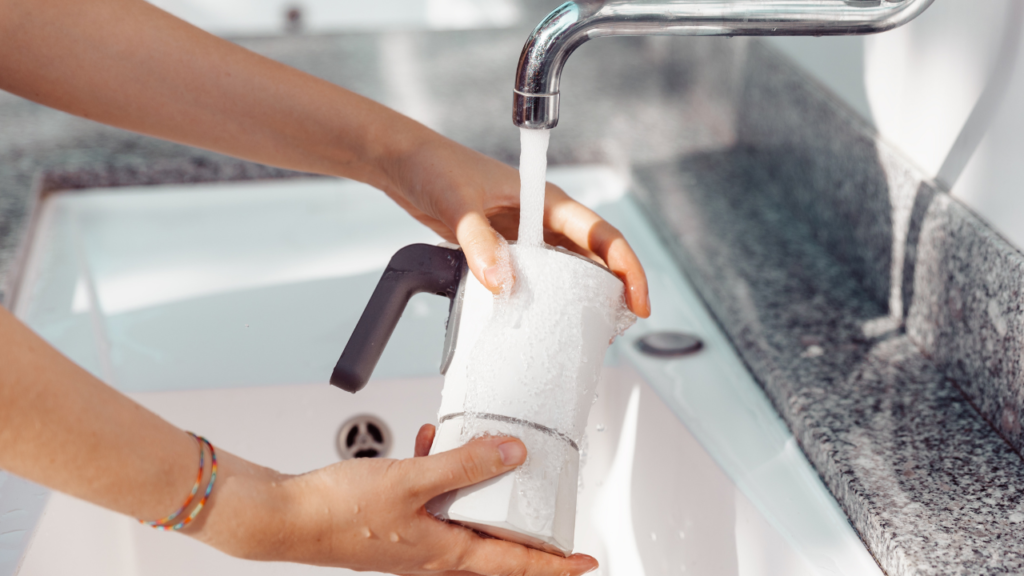
You should clean your coffee maker as instructed and replace any worn-out filters or other parts as the manufacturer advises to keep it in good condition. Keep your coffee maker clean and well-maintained to ensure years of brewing wonderful coffee.
Hence, my advice is to test the vinegar and judge its efficacy for yourself. A richer, fresher, and more delicious cup of coffee may be yours with only a few minutes of effort spent deep cleaning your coffee machine. Happy brewing!







